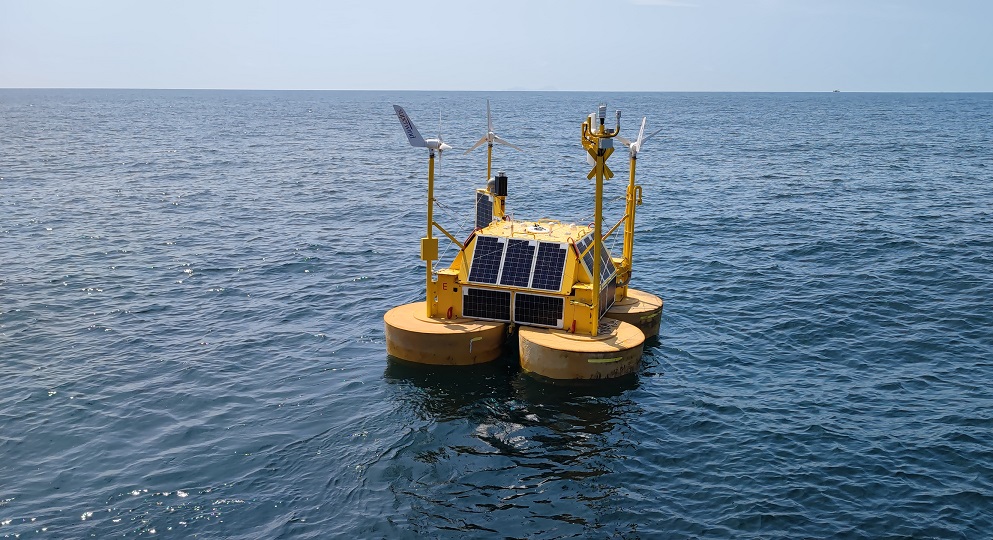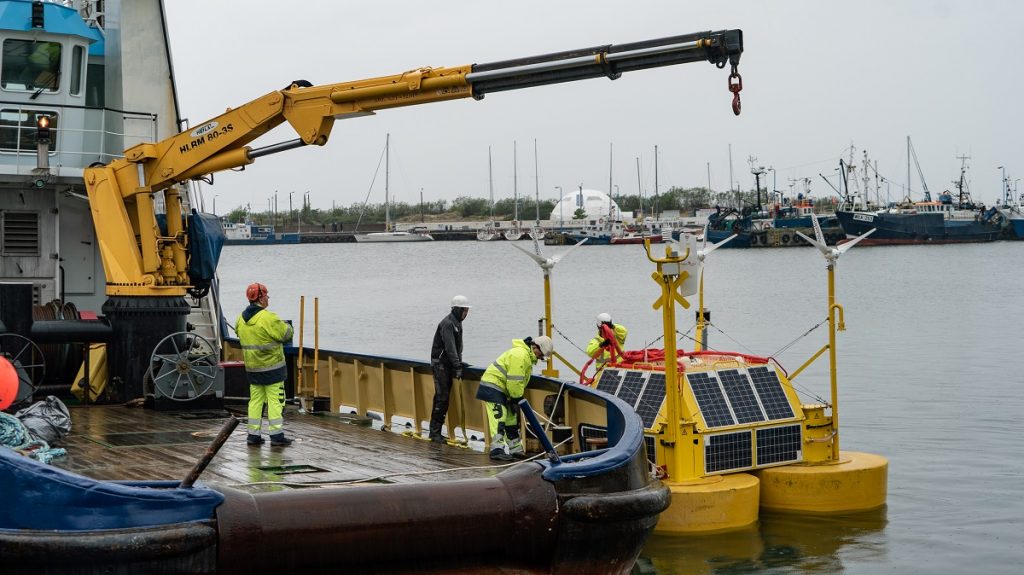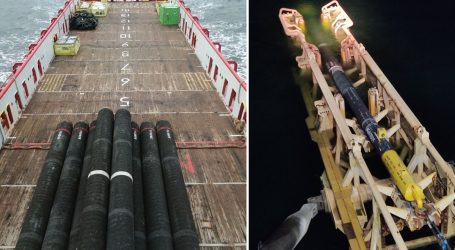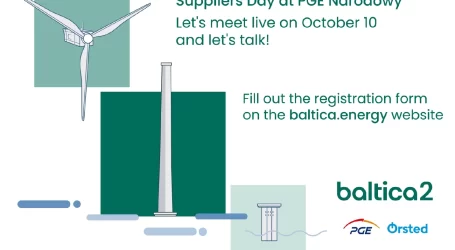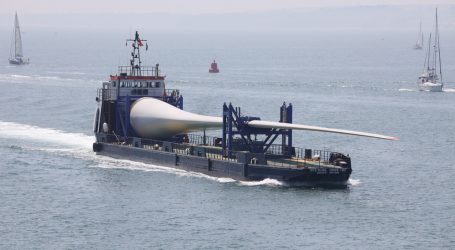PGE Baltica has commenced measurements of wind resources, waves and currents in the area where the Baltica 1 offshore wind farm will be constructed. A special measuring buoy will be used to collect the relevant data. It has just been installed several dozen kilometres from the Władysławowo coastline.
The measuring buoy is a small power plant equipped with, among other things, over twenty solar panels, three small wind turbines and a backup fuel cell powered by methanol.
– It is a fully self-sufficient device that can produce energy for its own needs. The power supply is very important. We need to have constant communication to be able to receive data and to be sure that the buoy is in a fixed location,” explains Wojciech Bućko, senior manager for offshore wind farm analysis and optimisation in PGE Baltica.
Before it arrived in Poland, the buoy underwent intensive validation off the coast of Great Britain. From there, it was transported to Spain, where it was prepared for another two years of measurements, and from Spain, by road to Władysławowo. Before it was launched, all systems were checked, the mentioned power sources were installed, and the measurement sensors were tested and configured. Then the buoy was put in the water to check its buoyancy.
At the end of May, the Noorpower tugboat took the buoy on board with its own crane and transported it 80 km from the shoreline, north of Władysławowo. The transport and launching operation took about eight hours.
– To obtain a seasonally balanced data set, the minimum measurement period should last about a year. Our buoy will stay there for two years to make the collected data set even more representative for the studied area – adds Wojciech Bućko.
Thanks to LiDAR (Light Detection and Ranging) technology, wind speed and directions at various altitudes (from about 30 m to 230 m), air humidity, temperature, precipitation and pressure will be measured.
Additional sensors mounted on the buoy will also measure undulations, i.e. the height and frequency of waves on the body of water, as well as the salinity level of the water.
– We receive data from the measuring buoy in real time. They are sent to us via satellite, so every day our knowledge grows. Finally, of course, the data will also be properly secured,” he explains.
Once the survey is complete, the buoy will go back to the Spanish company EOLOS Floating Lidar Solutions, to which it belongs.
– The data we obtain from the measurements will allow us to improve the entire design process. First of all, we will know the productivity of the farm, the information about the waves will be used to design a strong and durable foundation and, based on the wind data, we will know exactly how much energy it will be able to produce. Thanks to the measurements we will also receive an answer to the question how often we will be able to perform various operations during construction and operation, which have their limitations due to weather conditions,’ emphasises Wojciech Bućko from PGE Baltica.
The results of the measurements will constitute invaluable knowledge for the next development stages of the Baltica 1 project. Once they are completed, more detailed planning processes will start, i.e. defining the layout of the turbines and their model as well as designing the foundations, provided that the required geotechnical and geophysical surveys have already been carried out.
Baltica 1 is one of three offshore wind farm projects currently being developed by PGE in the Baltic Sea. This decade, offshore power plants Baltica 2 and Baltica 3, which comprise the Baltica Offshore Wind Farm with a total installed capacity of approx. 2.5 GW, are to start generating energy. In turn, the Baltica 1 offshore wind farm is scheduled to be operational after 2030, with an installed capacity of approximately 1 GW.
By implementing further offshore wind farm projects, PGE intends to meet the strategic goal of generating at least 6.5 GW of offshore capacity in the Baltic Sea by 2040.
source: PortalMorski.pl

